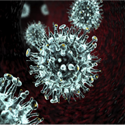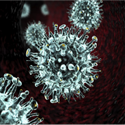Adapting to habitat
The complex relationship between ecology and evolution, sometimes ignored in biological models, is key in driving species adaptation in different environments. In a paper in Physical Review Letters, Rutger Hermsen and Terence Hwa, from the Center for Theoretical Biological Physics at the University of California, San Diego, propose a model that describes how evolution may be affected by the presence of spatial heterogeneities—location-dependent variations in the environment—in so-called source-sink ecologies, in which a species may only survive in a hostile environment (sink) after adaptation through a mutation. This model may mimic the emergence of insecticide resistance between plantations that use different types or amounts of insecticides, or bacteria migration between treated and untreated individuals.
One of the main findings in the paper is that, in general, the first adapted individual found in a hostile environment exhibits a mutation, which occurs prior to migration to the sink. This breakthrough may serve as a starting point for more realistic models where gradual environmental changes are allowed, and, in turn, to a better understanding of the development of infectious diseases or the emergence of antibiotic resistant pathogens. – Hernan D. Rozenfeld





